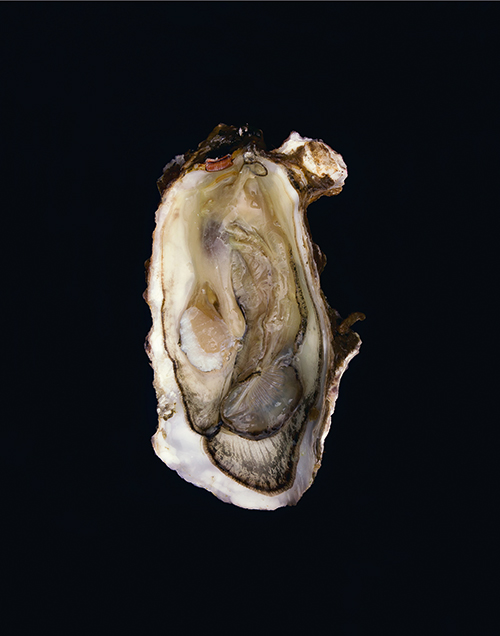Roman Schramm
The show of showing
The show of showing

Ernest Dichter, a founding father of motivational research, was the first to recognize that brands and products have malleable personalities. Dichter served as an advisor to companies and governments from 1946 until his death in 1991; his view that the manipulation of human behaviour was necessary for progress made him a creepy figure to his contemporaries. Today his theories seem as nostalgic as the German title of his book Strategie im Reich der Wünsche (1961; The Strategy of Desire, 1960), after which Roman Schramm named a 2009 video.
In this work actors interact absurdly with groceries and other objects in front of a black backdrop, at times joyful, at times crossly addressing the camera as if the viewer were responsible for the whole thing. While the actors in Andy Warhol’s Screen Tests (1964–66) struggled to withstand the intrusive gaze of the camera, here it is the audience who is put in an uncomfortable position, like guests at a party whose rules they don’t understand. Similarly, Schramm’s photographs work to destabilize the boundaries between image and body. Rather than meeting commercial strategies of fetishization and seduction with deconstruction, Schramm appropriates them in an affirmation so fervent it often tips them into absurdity. In the photograph Auster (Oyster, 2012) the hallucinatory sharpness of an upright oyster in cross section floats in blackness. This hyper-realism of the advertising photograph makes the oyster’s organs and the air bubbles that sparkle between them appeal directly to the viewer’s tongue and salivary glands. At the same time the sober clarity of the classic still life holds the observer at a distance.

Earlier series such as Changing Objects (2006) attest to the artist’s penchant for Constructivist experiments and the semantic sabotages of Dadaism and Surrealism. Schramm’s engagement with portrait photography led him to substitute mass-produced products such as running shoes (in the series Easytone, 2011) or hole punches (Leitz 5180, 2011) for human subjects. While one could, to a certain extent, accuse this confrontation between routine depiction and unfamiliar content as products of a cagey humour, Schramm has since moved his focus far beyond photographic referentiality. In Stimme lila (Voice Purple, 2013) and Stimme blau (Voice Blue, 2013), he leaves only the infinity wall which normally serves as a backdrop in a photography studio, using Photoshop to distort it into streaky, abstract, digital wobbliness. The suggestive titles provoke a synesthetic hidden object game: can a picture have a voice? Can a voice be purple? The image itself rejects the idea of a solution, as if to say: it was a joke. Stop staring. It’s not about me, it’s about the space we both share.
Schramm ironically problematizes photography’s representative function, and on multiple levels. The perfect craftsmanship of works such as Auster finds its opposite in amateurish-looking handicraft such as the salt dough figures which appear next to women’s legs in bright tights in Ohne Titel (Frankreich) (Untitled (France), 2013): arch, ambiguous object-creatures like Kafka’s Odradek, whose self-assured imperfection challenges the surrounding order. In Beinchen (Little Leg, 2013), a lilac-coloured salt dough prosthesis stands alone against a monochromatic orange surface. In the bottom right corner, a second unrelated scene unfolds, of no relation to the first: a photograph of an exhibition visitor resting on the gallery floor has been copied onto the four edges, its perspective distorted into a failed cube underlain with a cheap, Photoshopped drop shadow.

Such recent montages – experiments of Schramm’s with the design software Cinema 4D – attain a far-reaching autonomy. In juxtapositing disparate operations the elements break away, dissolve and are liberated as idling, idiosyncratically animated signs. Schramm twists Surrealism’s matching games further in depending not on the psychological effects of combinations of objects, but rather referring specifically to their staleness and interchangeability. What remains is a theatre which ostentatiously shows its own showing. This is especially evident in In Search of the Obvious (2013), which comprises two images hanging in a virtual stage setting in the midst of frayed, overlapping surfaces. One of the two images displays an egg. The only element that makes any indexical claim is a photograph of a toadstool mounted in one corner – a snapshot by Schramm’s mother.
The theatricality of Schramm’s motifs extends to his organization of space. For his solo exhibition Arbeit und Leben, Roman Schramm, Guten Tag (Work and Life, Roman Schramm, Hello, 2013) in May in the narrow medieval watchtower of the Kunstverein Hildesheim, Schramm built freestanding wall systems that branched out at varying angles and shone in cheerful sky blue and sulphur yellow. Hung on these temporary walls, the photographs relegated the tower to the position of spectator. A pair of jeans lay in one corner as if accidentally left there by the artist. The spontaneously born sculpture Jeans (2013), with its off-hand nonchalance, is a splendid piece of anti-art. It introduced a further medial and semiotic rupture, saving the exhibition from declaring itself a completed statement. Rather, the two spaces on top of each other held the suspense of an interrupted chess game waiting unconcernedly to resume.
Translated by Jane Yager

















